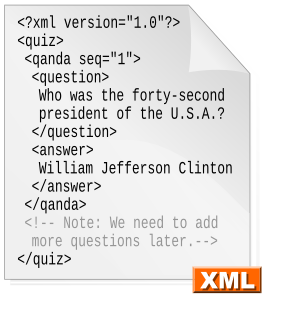| Data coding and transmission specification for digital broadcasting | |
 SBTVD Standards Structure | |
| Native name |
|
|---|---|
| First published | November 11, 2007 |
| Latest version | 0.0 November 11, 2007 |
| SBTVD standards | ||||||||||||||||||||
| ||||||||||||||||||||
ABNT NBR 15606 refers to a collection of technical standards that govern the transmission of digital terrestrial television in Brazil.
Contents
The data coding aspects of the Brazilian Digital Terrestrial Television Standards are described in the following documents published by ABNT, the Brazilian Association of Technical Standards (Associação Brasileira de Normas Técnicas): [1] ABNT NBR 15606-1:2007 - Digital terrestrial television - Data coding and transmission specification - Part 1: Data coding; ABNT NBR 15606-2:2007 - Digital terrestrial television - Data coding and transmission specification - Part 2: Ginga-NCL for fixed and mobile receivers: XML application language for application coding; ABNT NBR 15606-3:2007- Digital terrestrial television - Data coding and transmission specification - Part 3: Data transmission specifications for digital broadcasting; and ABNT NBR 15606-5:2008 - Digital terrestrial television - Data coding and transmission specification – Part 5: Ginga [2] -NCL [3] for portable receivers: XML application language for application coding.
In the field of digital and interactive television, Nested Context Language (NCL) is a declarative authoring language for hypermedia documents. NCL documents do not contain multimedia elements such as audio or video content; rather they function as a "glue" language that specifies how multimedia components are related. In particular, NCL documents specify how these components are synchronized relative to each other and how the components are composed together into a unified document. Among its main facilities, it treats hypermedia relations as first-class entities through the definition of hypermedia connectors, and it can specify arbitrary semantics for a hypermedia composition using the concept of composite templates.

Extensible Markup Language (XML) is a markup language that defines a set of rules for encoding documents in a format that is both human-readable and machine-readable. The World Wide Web Consortium's XML 1.0 Specification of 1998 and several other related specifications—all of them free open standards—define XML.
The standard was written by telecommunications and television experts from many countries with their works coordinated by the SBTVD Forum and cover in detail all the aspects of video and audio coding that applies to SBTVD. The complete document can be found and downloaded freely in English, Spanish and Portuguese at ABNT's website.

The SBTVD Forum is a non-profit organization of private and public companies responsible for the general aspects of Digital TV deployment in Brazil. The organization was founded in 2007 in order to address all technical issues regarding the upcoming SBTVD standard, also known as ISDB-Tb.
The standard addresses one of the main advances regarding the middleware specification, one of the Brazilian digital television system. The middleware specification comprises a procedural portion, performed by Java, [4] and a declarative portion, performed by NCL and Lua, with a bridge that allow for mutual access between them. The combined Brazilian middleware specification is called Ginga.

Java is a set of computer software and specifications developed by James Gosling at Sun Microsystems, which was later acquired by the Oracle Corporation, that provides a system for developing application software and deploying it in a cross-platform computing environment. Java is used in a wide variety of computing platforms from embedded devices and mobile phones to enterprise servers and supercomputers. Java applets, which are less common than standalone Java applications, were commonly run in secure, sandboxed environments to provide many features of native applications through being embedded in HTML pages.

Lua is a lightweight, high-level, multi-paradigm programming language designed primarily for embedded use in applications. Lua is cross-platform, since the interpreter of compiled bytecode is written in ANSI C, and Lua has a relatively simple C API to embed it into applications.






